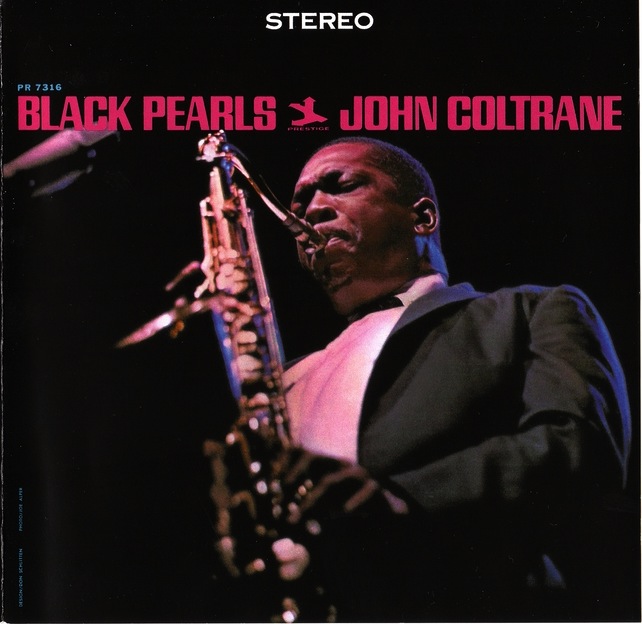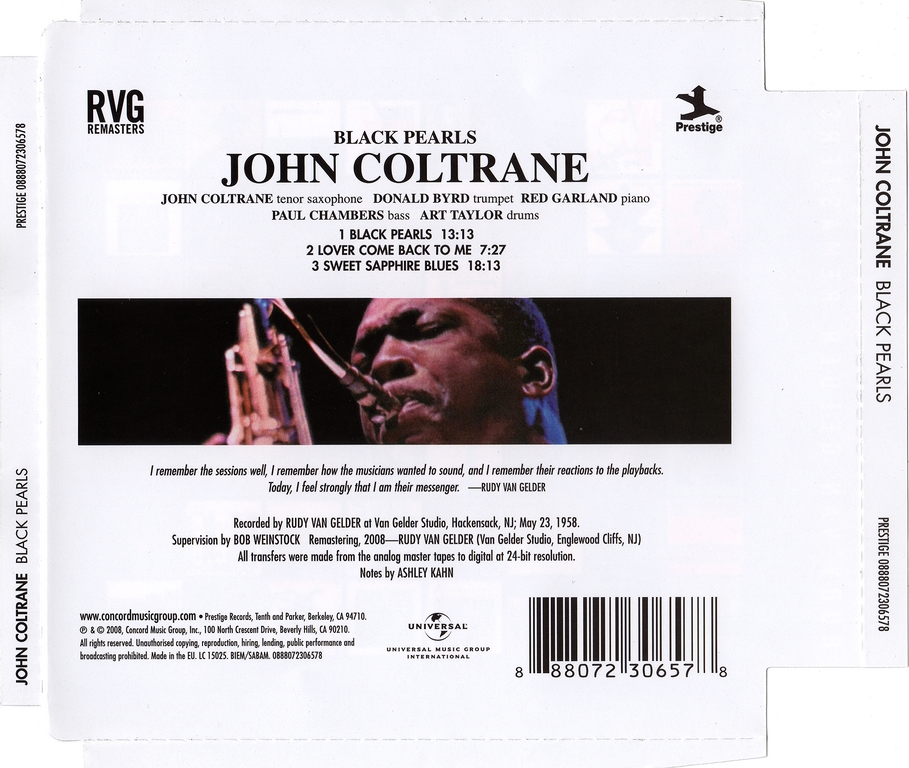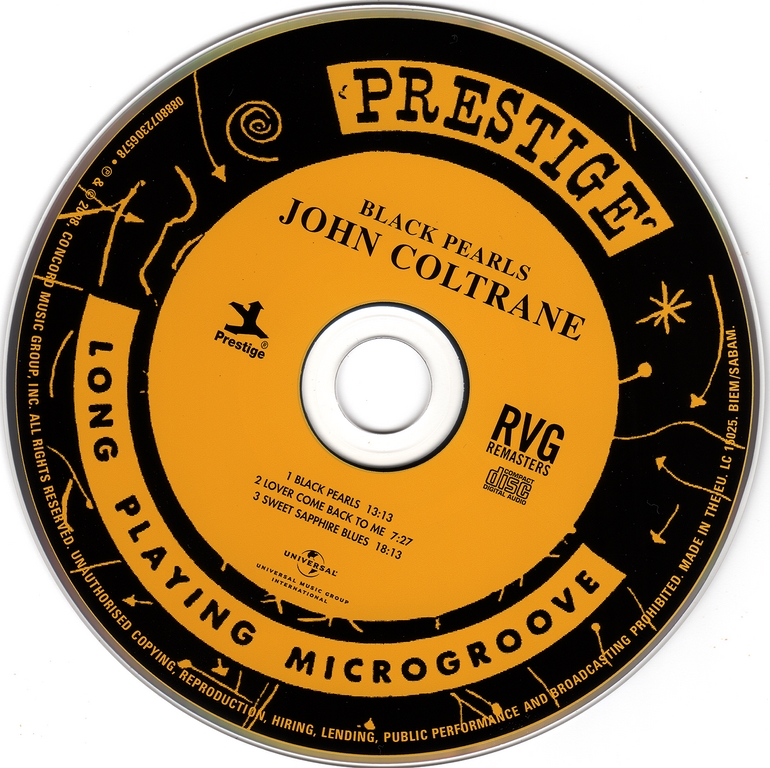


BOOKLET
Black Pearls is an album credited to jazz musician John Coltrane, released in 1964 on Prestige Records, catalogue 7316. It is assembled from the results of a single recording session at the studio of Rudy Van Gelder in Hackensack, New Jersey. As Coltrane’s fame grew during the 1960s long after he had stopped recording for the label, Prestige used unissued recordings to create new marketable albums without Coltrane’s input or approval.
On that Friday session, “the songs weren’t long enough for a whole album”, recalled producer Bob Weinstock in 2001, “so I said Let’s do a slow blues to finish it out.” Coltrane invited Weinstock to write the song on the spot, but he didn’t know music, so Coltrane replied “Just tell me what you want me to play. Should it go like this?” and he would play some notes. After having played a rough melody, he’d say “Okay, you wrote it.” That was the genesis of “Sweet Sapphire Blues”.
review[-]by Lindsay Planer
As is often the case with an artist as prolific as John Coltrane, not every release can be considered as essential. Black Pearls seems a bit ambiguous when placed in a more historical context. It was only three days later that Coltrane participated not as a leader, but rather a member, of the Miles Davis Sextet that recorded “Stella By Starlight” and “On Green Dolphin Street.” There is an obvious disparity between these three mostly improvised and lengthy jams and the Davis session. This is in no way to insinuate that Coltrane’s performance is anything less than par. Black Pearls indeed captures Coltrane at the height of perfecting the intense volley that would garner the name “sheets of sound.” Featuring Donald Byrd (trumpet) and the Red Garland Trio — Garland (piano), Paul Chambers (bass), and Art Taylor (drums) — this is the same quintet that had mightily contributed to Lush Life and The Believers, as well as The Last Trane. This session would be their last together. The title track is a mid-tempo bop number that quite frankly fails to make a great melodic impact. It’s not until Coltrane’s indomitable solo that a direction is found and, for a short while, remains focused. Once the reins are passed to Byrd, Garland, Chambers, and to a lesser extent Taylor, the song meanders through some fairly vapid changes. Fortunately, the soloing from Byrd is more direct and is able to build and support Coltrane’s equally impressive display. The difference is immeasurable as no holds are barred from Garland or Taylor — who is arguably at his prime. All told, this performance is well worth the price of admission. At 18-plus minutes, “Sweet Sapphire Blues” (penned by Prestige Records owner Robert Weinstock) is the longest track on Black Pearls. It is in essence a 12-bar blues jam. Coltrane’s double- and triple-time solo is primal within this setting. The overemphatic backbeat allows for more group interaction, yielding a full and well-rounded union among the musicians that was sadly absent from the opening track.
